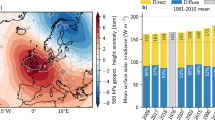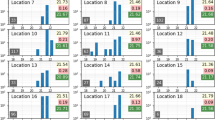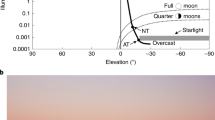Abstract
THE visibility of Jupiter's red spot in relation to solar activity has recently been widely discussed in a series of letters. The original claim of dependence of the red spot on ultraviolet radiation from the Sun noted by Graf, Smith and McDevitt1 for the period 1892–1947 was discarded by Argyle2 on the basis of very low value of correlation coefficient (r = 0.27) between the visibility (V) and Zurich relative sunspot number (Rz). The inclusion of recent observations of Jupiter by Reese in the analysis of Solberg and Chapman3 extends the data to 1967 and shows even a lower value of the coefficient of correlation (r = 0.16). The use of some other aspect of solar activity instead of sunspot numbers—such as solar particles, suggested by Scott Smith4—is not suitable, for necessary data are not available as far back as 1892. Because the sunspot is known as the index of both wave as well as particle radiations from the Sun, however, a re-investigation of the relationship with the only available sunspot data was considered worthwhile.
This is a preview of subscription content, access via your institution
Access options
Subscribe to this journal
Receive 51 print issues and online access
$199.00 per year
only $3.90 per issue
Buy this article
- Purchase on Springer Link
- Instant access to full article PDF
Prices may be subject to local taxes which are calculated during checkout
Similar content being viewed by others
References
Graf, E. R., Smith, C. E., and McDevitt, F. R., Nature, 218, 857 (1968).
Argyle, E., Nature, 219, 474 (1968).
Solberg, H. G., and Chapman, C. R., Nature, 221, 352 (1969).
Scott Smith, T., Nature, 219, 357 (1968).
Croxton, F. E., and Cowden, D. J., in Applied General Statistics, 680 (Prentice Hall, Inc., New York, 1947).
Peek, B. M., in The Planet Jupiter, 240 (Faber and Faber, London, 1958).
Author information
Authors and Affiliations
Rights and permissions
About this article
Cite this article
BASU, D. Relation between the Visibility of Jupiter's Red Spot and Solar Activity. Nature 222, 69–70 (1969). https://doi.org/10.1038/222069a0
Received:
Revised:
Issue Date:
DOI: https://doi.org/10.1038/222069a0
This article is cited by
-
Solar-planetary cycles in Jupiter's great red spot darkness
Earth, Moon and Planets (1996)
-
Visibility of Jupiter's Red Spot
Nature (1969)
Comments
By submitting a comment you agree to abide by our Terms and Community Guidelines. If you find something abusive or that does not comply with our terms or guidelines please flag it as inappropriate.



